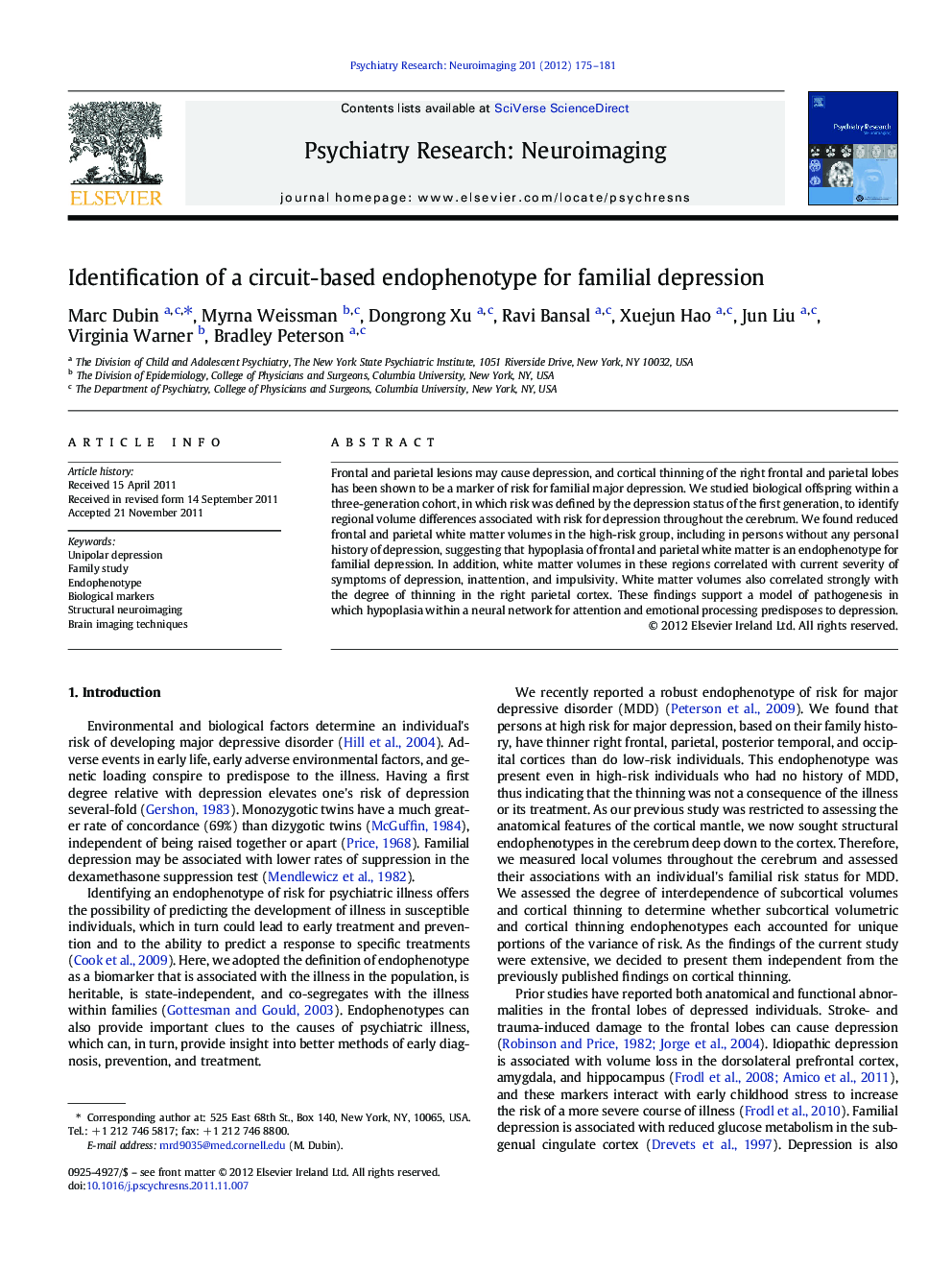| Article ID | Journal | Published Year | Pages | File Type |
|---|---|---|---|---|
| 334477 | Psychiatry Research: Neuroimaging | 2012 | 7 Pages |
Frontal and parietal lesions may cause depression, and cortical thinning of the right frontal and parietal lobes has been shown to be a marker of risk for familial major depression. We studied biological offspring within a three-generation cohort, in which risk was defined by the depression status of the first generation, to identify regional volume differences associated with risk for depression throughout the cerebrum. We found reduced frontal and parietal white matter volumes in the high-risk group, including in persons without any personal history of depression, suggesting that hypoplasia of frontal and parietal white matter is an endophenotype for familial depression. In addition, white matter volumes in these regions correlated with current severity of symptoms of depression, inattention, and impulsivity. White matter volumes also correlated strongly with the degree of thinning in the right parietal cortex. These findings support a model of pathogenesis in which hypoplasia within a neural network for attention and emotional processing predisposes to depression.
